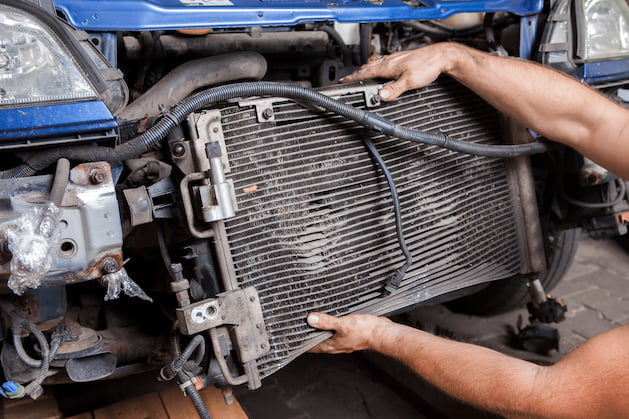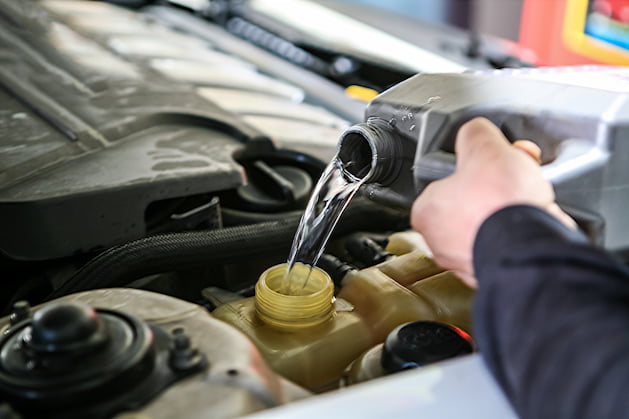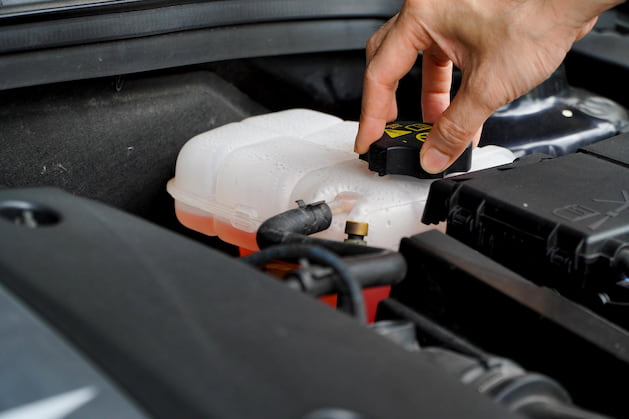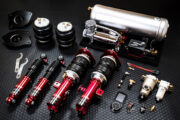Overflow and extension tanks are part of a car’s cooling system, which is used when the car’s radiator cannot fit enough water to cool the engine. When these tanks are full, they overflow into the main tank and cool it down further; when they’re empty, the engine will overheat. Extension tanks work with an outside temperature sensor that tells the car’s engine management unit (EMU) when to activate the cooling fan, so that it can bring in more air and cool down the liquid in the radiator quickly enough.
A car cooling system has three main parts: the radiator, which cools down the engine’s hot water; the fan; and the reservoir tank. The fan blows air through the radiator, which in turn cools down the car’s liquid. The reservoir tank stores extra coolant when needed to keep the engine from overheating when driving at high speeds or for long periods of time. When there is not enough coolant in the tank, either because of leakage or because it has been drained for maintenance, an overflow and extension tank is installed.

An overflow and extension tank can be either a separate unit or it can be built into the car’s original radiator. It uses an overflow pipe to bring coolant from the main tank to the engine when needed, so that the fan will have enough liquid to cool down. The pipe connecting the two tanks should be made of metal and slotted at one end, so that when there is not enough coolant in the reservoir tank, air can get in and cool down the liquid.
An overflow tank is used when there is no other way to keep an engine from overheating, such as when a car’s radiator has been removed for repair and there is nothing else that can be done to keep it from getting too hot. It is also necessary in certain situations where extra cooling power is needed; for example, if a car has been modified so that its engine runs hotter than usual. An extension tank is usually installed on cars whose radiators already have overflow tanks, so that more coolant can be added when necessary.
An overflow tank is built with a reservoir tank and an overflow pipe. The two are connected by a hole in the top of the reservoir tank, allowing coolant to flow from one container to another when needed. This gives the car’s engine extra time to cool down if it starts overheating; for example, if there is not enough coolant in the main tank or if part of the car cooling system has broken and there is no way to add more coolant.

The overflow tank works by itself after the engine has been turned off; however, if it is not installed properly and there is a leak in the system, then coolant can drain out of the car’s radiator while driving and cause damage to other parts of the vehicle’s cooling system.
An extension tank is made with an overflow pipe and a reservoir tank. It is connected to the main tank so that extra coolant can be added to the system when needed. It is usually installed on cars whose radiators already have overflow tanks, so that more coolant can be added when necessary. The extension tank works by itself after the engine has been turned off; however, if it is not installed properly and there is a leak in the system, then coolant can drain out of the car’s radiator while driving and cause damage to other parts of the vehicle’s cooling system.
An overflow tank should be installed with care because it is hard to fix if it leaks; for example, if there is a hole in the top of the reservoir tank that connects with it. If this happens, then coolant can drain out of the car’s radiator while driving and cause damage to other parts of the vehicle’s cooling system. An extension tank should also be installed carefully because it is easy to leak if not installed correctly. The overflow pipe should be slotted at one end so that air can get into it when necessary. It should also be made of metal and not plastic, which is more likely to crack or break than steel or aluminium.

If an overflow tank has been installed on a car, then it should be checked periodically for leaks; for example, every three months or so. If the coolant in the reservoir tank starts to get low, then it may be necessary to add more. The radiator’s temperature can be checked with a thermometer, which is usually included with extension tanks.
An overflow tank is usually installed on cars that have been modified; for example, ones with turbochargers. It is also used when a car’s radiator has been removed for repairs and there is no other way to keep the engine from getting too hot.
An extension tank should be installed on all vehicles because it gives them extra coolant when necessary. If this is not done, then the engine could overheat in certain situations. A vehicle’s cooling system works by itself after the engine has been turned off; however, if an extension tank is not installed properly and there is a leak in the system, then coolant can drain out of the car’s radiator while driving and cause damage to other parts of the vehicle’s cooling system.
Coolant and expansion overflow tanks are available in different sizes, depending on the make and model of a car. The size should be checked before installing one on a vehicle because if it is not large enough, then coolant may leak out and damage other parts of the cooling system. If you aren’t handy with tools, it’s best you leave the installation to a professional.


